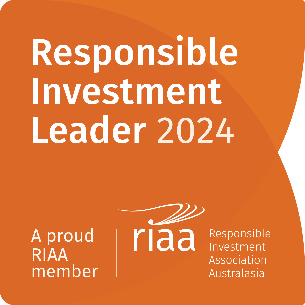Will Interest Rates Support Share Markets, Again?
3 July 2019
Since November 2017 global interest rates have fallen sharply. While the trend towards declining interest rates over the last 30 years has been clear, the rate of decline has increased significantly and become more fascinating as interest rates approach zero. The most important benchmark for this has been the pricing of US 10-year Treasuries where the interest rate since November 2017 has fallen from 3.2% to 2.0%, whilst yields on Australian and New Zealand government 10-year debt have also collapsed, to 1.35% and 1.6% respectively. Few young investors will remember the close to 20% interest rates on offer from government bonds in the 1980s. The degree to which these financial assets have been repriced are in themselves very important as these are the key interest rates off which the prices of all assets are fundamentally set. Investors will compare the value of any cashflow generating asset to the yield offered by government bonds (also known as the risk-free rate). This rate helps set the price of all assets from shares, to property, farms, forestry, commodities and even things as obscure as cryptocurrencies.
Interest rates are now into historically unchartered territory as illustrated by the fact that over one third of global government bonds, or more than $13 trillion in global debt, is now trading with a negative yield. In simple terms this means that if someone was to purchase one of these bonds they would be guaranteeing themselves a loss of capital. This is an extreme representation of risk aversion and the questions for investors today are whether the backdrop for global growth and financial market stability is sufficiently uncertain that such positioning is warranted and where do we go from here?
After a solid start to 2019, with US first-quarter GDP growing at 3.2%, global economic momentum has slowed a little. This is in large part a consequence of the Trump initiated trade policies. Such policies are disruptive because they tax consumers and undermine global supply chains. We are now seeing evidence of a contraction in the rate of growth as the trade war impacts exporters and the manufacturing sectors in key markets such as the US and China although most countries are being affected. In Australia recently, the RBA highlighted a sharp slowing in global trade as a key consideration for their policy decisions and in New Zealand the RBNZ described the slowdown in China as one of their “key downside risk(s)”. Against this backdrop central banks have turned dovish (which suggests they want to cut interest rates further) and market expectations are that over the next 12-months we will see a range of supportive policies being introduced. US Federal Reserve Chairman, Jerome Powell, set the tone with a comment in mid-June that “an ounce of prevention is worth a pound of cure”. Investors are now expecting three interest rate cuts to occur in the US over the next six months (amazingly the last time that they cut rates was in December 2008!). In May this year, the RBA and RBNZ reduced their official cash rates, recognizing that inflation pressures are subdued, and expectations are that in both countries further policy easing is imminent.
The market believes further interest rate cuts are a certainty. What is less clear is how these cuts will affect the pricing of shares, but history can be a useful guide. Since 1971 there have been 11 easing cycles in the US. In eight of these cycles, shares have rallied in the year following the first cut. Where this didn’t occur, the US economy in each occasion entered recession despite the actions of the Fed. The average one-year return after the first cut has been 8% but if we assume that the US economy is not going to enter into a recession in the next 12-months then history points to an average lift in the stock market of 14%.
In recent years this dynamic has contributed to a concept that the media often refers to as the “Fed Put”. What this suggests is that the US Federal Reserve, as the world’s most influential central bank, has increasingly become responsive to asset values and most importantly share prices. We know this to be true because when they identify “overall monetary conditions” in the US, the largest contributor to this measure is the S&P500 Index. In simple terms what this means is that if the relationship between interest rate cuts and stock prices holds true, then in normal times the potential for major downside moves in stocks is limited. The Fed is intent on writing an insurance policy for investors unless there is a major exogenous shock, or the economy is about to slow dramatically. This is a very dangerous policy and stores up risk for the future. Investors can be confident that every dip in the stock market is a buying opportunity as the Fed will ride to the rescue.
Consensus expectations are that global growth will remain intact over the next 12-months. Despite corporate confidence levels remaining subdued, economic momentum indicators are currently stronger than what we have historically seen prior to the initiation of an interest rate cutting cycle. Unemployment levels in the US are at the lowest level seen in 50-years, household savings are at healthy levels and the housing market is showing signs of recovery. All of this bodes well for a positive thesis with equities unless there is a further deterioration in the state of trade.
In New Zealand and Australia, the historical relationship between interest rate settings and share market movements are similarly positive. Since 1971 the All Ordinaries Index in Australia has, on average, rallied by 12% in the year following the first cut by the US Fed. Typically, we take a lead from the US in terms of policy moves and our current experience is consistent with this outcome. The RBNZ has recently cut our cash rate to 1.5% and across the Tasman this setting is now down to 1.25%. During the depths of the GFC the cash rate reached a low of 3.0% in Australia, but some market commentators are this time looking for a cycle low of 0.5%!
This backdrop is a fascinating one for local equity market investors. The relationship between share prices, corporate earnings and the underlying economy remain critical. We are unlikely to see equity markets push meaningfully higher if the operating environment required for earnings growth deteriorates too much, but as is the case in the US this outcome feels unlikely. Domestic fiscal and monetary policy levers are being pulled to support consensus growth estimates of 2% – 2.5% for both countries over the next 12-months.
Investors have enjoyed a staggering run in stock prices since the GFC. The US is up 254% whilst New Zealand and Australia have rallied 276% and 200% respectively. Despite this performance, valuations globally do not appear excessive relative to history. The exception to this is New Zealand, but there are specific factors which have contributed to this including strong demands from Kiwisaver and offshore investors searching for yield alternatives (our equity market dividend yield is currently ~4%). These remain uncertain times but, in a world where governments and central banks are determined to reflate economic activity through all means possible, we certainly have encouraging historical reference for the direction that equities can trade.





